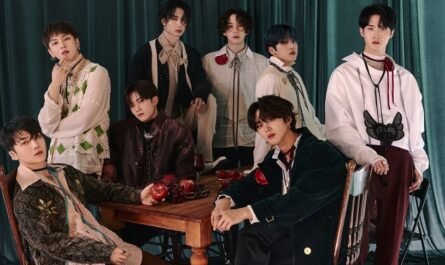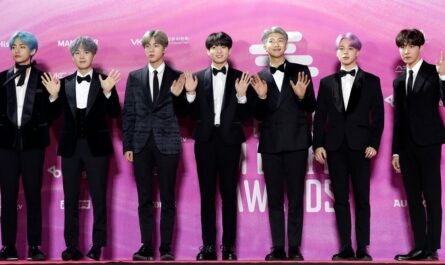BTS was nominated for a Grammy Award, and the new song “Butter” won first place on the Billboard “Hot 100” for the fourth time.
TWICE recently performed on the popular American program “The Ellen DeGeneres,” and BLACKPINK was excited about the venue at the Coachella Festival.
Not limited to BTS, many K-POP idols have begun to chart in on the billboard, and I strongly feel that the genre of “K-POP” itself has become recognized worldwide.
The K-POP boom has occurred many times in Japan since the early 2010s, but when I noticed it, I quickly jumped out of Asia and expanded the field of activity to the world.
I want to consider why K-POP has gained worldwide popularity so far and the soil of K-POP behind it.
The existence of new media should be mentioned as one of the factors that increased the global popularity of K-POP.
Especially on YouTube, it is customary for K-POP to publish MVs in full scale with multilingual subtitles without limiting the viewing area, and not only that but also the “dance practice” version on the official channel. (Not only training clothes, but also costumes, parts that have been replaced, etc. are diversified), videos that approach the production site, such as behind-the-scenes videos of MV shooting and recording and knowing their characters. You can get to know the people from various angles, such as the actual variety of original content that can be done, from the backside of the music and performance only on the official channel.
Apart from this, other performance videos will be released steadily on each music program and the official channel of the video production company, so it is needless to explain how many videos can be watched for free after announcing the new song. Absent.
And like YouTube, another indispensable video platform for K-POP is “V LIVE.”
This is Instagram’s live function and video distribution content, such as Nico Nama, SHOWROOM, and 17 (Ichinana). Still, the characteristic is that it can be viewed from overseas without connecting the multilingual subtitle function of the video and VPN. It is a point.
Initially, it had a real-time subtitle function in multiple languages such as English, Chinese, Vietnamese, Thai, and Japanese from the beginning of the service for more than 80% of overseas users.
In 2017, two years after the service started, a function called “V fansub” was added, making it easy for anyone to add subtitles to videos.
V LIVE said that the fansub feature would open up overseas marketing for new artists with limited resources and not yet much translated content at the time of release.
The effect of the original subtitle “Fansub” actually attached by fans is tremendous, and BTS, a popular idol with many fansub creators, has been translated into 59 languages. EXO has been translated into 58 languages.
Given that ten languages alone makeup 75% of the 4.1 billion Internet users worldwide, translating into so many languages would make the content accessible to most Internet users.
In addition, V LIVE has adopted an in-app bonus system for translators to make content multilingual without spending a massive budget on subtitles.
In addition to the fact that the entrance to the content is wide open for many people, the fact that it has provided an environment where fans can freely share rather than strictly defending their rights also speaks of K-POP fan culture. It will be indispensable.
Some K-POP fans are called “Homepage Masters” (abbreviated as “Homma” in Korea and “Master” in Japan). As the name suggests, it refers to a person who takes a picture of a live concert or entering the venue and uploads photos and videos that have been processed, such as retouching and color correction to a private fansite.
Of course, such a fan’s selfish shooting is not officially recognized in South Korea. Still, the reason why Homma’s existence has been tolerated for a long time in the K-POP world is that it has a significant role as an active public relations person. I think there is.
The strength of transmission is also an order of magnitude, and surprisingly, taking BTS member Jungkook’s Homma as an example, the number of followers reaches nearly 1.9 million.
The activities of these people called Homma are not complete with just uploading the photos and videos taken on the Internet. When it comes to major Homma, they release calendars and photobook sets with DVDs once or twice a year. The scale of sales is so large that the fans in charge of coordinating the purchases of each country come up with their names.
We will place “support advertisements” to public institutions by collecting profits from fan volunteers’ goods sales and crowdfunding and distributing horizontal paper and cloth slogans with idol photos and names printed at live venues. The activities are wide-ranging, not just taking pictures.
In particular, China’s Homma (called “bar” in China) is organized and divides the work according to its specialties such as translation, accounting, and design.
If it’s a big bar, recruitment is announced about once a year. The application includes proof of fan rank in the SNS community, and if you are in charge of design, document screening such as portfolio, so it is no different from a company. The division of labor enables quick translation and supports the real-time catching of information even when overseas.
There are various types of support advertisements, but the content is not for commercial purposes, so there are two types: “Birthday (Sunil advertisement)” to celebrate the recommended birthday and “Anniversary advertisement” to celebrate the anniversary of the debut. It’s a classic.
In Japan, it is a case that one shot is NG with portrait rights, but it is posted in various places in public institutions, and as a result, it leads to the promotion of idols, so it is made up of the implicit understanding of the office side.
Birthday ads, in particular, are getting bigger and bigger to show off how big the fandom is.
Advertising jacks at subway/bus stops, running, wrapping buses, and collaborating with cafes have become a culture that has become so pervasive that it is no exaggeration to say that if you live in Korea, even if you are not an idol fan, you will see it every day. However, many agencies in Korea specialize in support advertising.
The spread was born because these fans themselves became idol public relations officers and allowed them to actively disseminate information to the outside, both online and offline, rather than authoritarian oppressing it. There is no doubt that.
“Barrier-free” and “freemium.”
It can be said that a “barrier-free” environment where “anyone,” “from any timing,” “without spending money,” and “if you have the internet” can be swamped is an essential keyword in modern hits. In K-POP, all the content that is enough to get hooked is released for free on the net, and after that, I think it has gained fans worldwide by the “freemium” element of guiding to goods and concerts.
Freemium content is not only open to the public but has been propagated from person to person due to its ease of sharing.
For example, even if you want to show a performance broadcast on Japanese terrestrial broadcasting to overseas friends, there is no way to share it. Viewing is limited to those who were “at that time” and “domestic.” Still, in the case of K-POP, Since the music program publishes the video after the performance on YouTube, it can be viewed from overseas, and at the same time, it is possible to get excited, and if you missed it,,, you could ride behind. Of course, the songs you are interested in can be downloaded immediately from the music distribution service.
This freemium concept of K-POP is highly compatible with Gen Z, the leading consumer group today.
Since a simulated experience can be created by searching the Internet, the motivation for “subscribing (following)” something is to emphasize the story behind it and the experience itself created by involvement.
For Gen Z, the first step is heavy for content that requires first decision-making, such as billing and purchase and time constraints.
In addition, Gen Z, who naturally “shares” good experiences, voluntarily becomes a “sender.”
Not only get information, but translate for those fluent in the language, draw illustrations for those who are good at drawing, make goods for dexterous, host events for those who have many friends, and all of them. Is shared on the net.
Another characteristic of K-POP is that fans act as sales staff and public relations staff to “sell idols.”
Z has two characteristics: “free access that does not play people due to economic conditions, language, physical distance, fan history, etc.” and “fandom with autonomy that wants to spread beyond the scope of consumers.” Perhaps this global K-POP movement was created as a result of meeting the consumer needs of generations.











